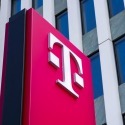
Open RAN, as Deutsche Telekom's Claudia Nemat explained earlier today, is largely about supplier choice. Yet most of the deals seem to feature exactly the same vendors. Intel is practically unavoidable, which means the servers and baseband software come from Intel's ecosystem. Radios are nearly always from Japan or South Korea. The Europeans are nowhere.
In Deutsche Telekom's case, that is a shock. The German operator had previously made a fuss about Nokia, a Finnish equipment giant it kicked out of its German radio access network in 2017. "I am particularly pleased that with Nokia we have also been able to win a strong European partner for our co-operation in O-RAN," cooed Nemat, Deutsche Telekom's technology boss, when unveiling "O-RAN Town," a real-world testbed for open RAN technology near the city of Neubrandenburg, last December.
O-RAN Town went live today, timed to coincide with the start of Mobile World Congress, and Nokia is suddenly conspicuous by its absence. Apparently sticking to the open RAN playbook, Deutsche Telekom has taken baseband servers from Dell and Supermicro, featuring Intel's x86 chips, and baseband software from Mavenir, based on Intel's FlexRAN design. The radios, meanwhile, come from Fujitsu and NEC.
Figure 1:  Deutsche Telekom's Claudia Nemat insists Nokia is still an O-RAN Town partner.
Deutsche Telekom's Claudia Nemat insists Nokia is still an O-RAN Town partner.
The headline news, from Deutsche Telekom's perspective, is that O-RAN Town is the first European deployment of massive MIMO technology based on open RAN. Massive MIMO essentially crams more transmitters and receivers into the antenna. It is the high-performance gear designed for the most demanding places, and it is extremely difficult to do with open RAN. Partly, that is because of the investment required in silicon, and partly it is because networks still seem to perform better when hardware and software are tightly coupled. Open RAN is all about decoupling.
"We switched on O-RAN Town with real O-RAN-compliant antennas in the network and with massive MIMO and with that we have Europe's first O-RAN-compliant massive MIMO antenna – not in theory or in the lab but beaming," said Nemat, beaming in a different way.
Who else but NEC?
The expertise, in this case, comes from NEC, a Japanese hardware company propelled to international open RAN stardom by its role in the network of Rakuten, a Japanese ecommerce firm now building a fourth mobile network in Japan. While the pitch is often about open RAN as an opportunity for smaller players, NEC is the opposite, generating roughly $27 billion in revenues in its last fiscal year. Besides catering to Rakuten, it has just landed a deal to provide massive MIMO radios to Vodafone UK for part of that operator's Huawei swap-out. Right now, the open RAN market for massive MIMO does not look especially diverse.
It all sounds like a major disappointment for Nokia, too. The Finnish vendor claims to have swung behind open RAN, in response to customer demands, and yet it still has no obvious deals bar one to provide some 4G equipment to Rakuten. Last week, moreover, it claimed to have developed the world's most lightweight, high-performance massive MIMO radio unit in the 32TRX configuration (meaning there are 32 transmitters and receivers). That configuration is the one Deutsche Telekom is now buying from NEC.
All is certainly not lost for Nokia, which is still a O-RAN Town partner, Nemat told Light Reading, despite its omission from today's announcement. "I must say we will actually have a request for proposal for going beyond O-RAN Town and having something on a bigger scale in October this year and then everyone is actually asked or requested to join us there," she said. "But Nokia is a partner in O-RAN Town, absolutely."
Want to know more about 5G? Check out our dedicated 5G content channel here on Light Reading.
Today the German incumbent is heavily reliant on Huawei and Ericsson for its radio access network, with the Chinese vendor supplying about two thirds of its kit, according to research carried out last year by Strand Consult, a Danish advisory group. The operator would presumably not have charged ahead on 5G – now available to 80% of the population – if it had not received some kind of assurance that German authorities will not ban Huawei, as the UK's have done.
Yet Timotheus Höttges, Deutsche Telekom's boss, spent much of his morning keynote at MWC talking about the new "silicon cold war" between the US and China and a "decoupled world." The use of Huawei might simply become untenable if US sanctions block its access to the chips it needs for its 5G equipment. Open RAN provides alternatives other than Ericsson and Nokia.
The danger, at the moment, is that it turns out to be even less competitive than the traditional RAN, and not as good. Performance-wise, operators hope it will close the gap in the next few years. But if each distinct part of the RAN features a limited number of suppliers, and seemingly no processor alternatives to Intel, operators will face two difficulties: systems integration, and a lack of vendor alternatives if something goes wrong.
Related posts:
— Iain Morris, International Editor, Light Reading
About the Author(s)
You May Also Like











